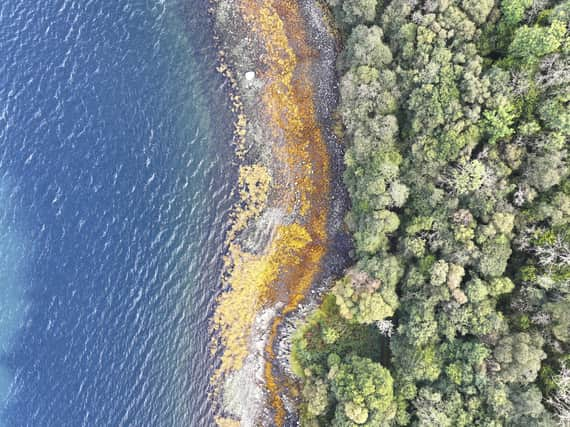Friends of the Scotsman: Restoring Scotland's rainforest


The damp native oak, ash and hazel woods that grace our western seaboard, trees ancient, gnarled and hung with lichens and ferns, are now firmly and rightly classed as true rainforest. The stable wet climate has, as in the wet tropics, encouraged specialisation among communities of wild species, and the diversity of life here is similarly spectacular. No orangutans or jaguars, it must be said – but a bewildering array of vivid mosses, insects, lichens and fungi that are, in their own way, equally special.
The Rainforest Zone is the area of Scotland with the ‘hyper-oceanic’ climate conditions this ecosystem needs, and it covers 18,500 km 2 , around 23 per cent of Scotland’s land area. The best estimate of remaining rainforest in this zone is 300 km 2 – just 2 per cent of Scotland’s Rainforest Zone.
The precise historic patterns that have led to this situation are not fully understood - but there is little doubt that our rainforest is now more denuded and fragmented than at any time since the last ice age. Like its tropical counterpart, the future of Scotland’s rainforest is severely threatened. It has been in decline for well over a century and this proceeds apace today, with two central pressures driving the losses.
First, excessive browsing by herbivores, especially by high densities of wild deer, is preventing the forest from naturally regenerating, simply because the young trees are eaten.
Second, invasive Rhododendron ponticum – a non-native garden escapee that finds perfect growing conditions in the rainforest – is spreading throughout the region and is lethal to the ecosystem.
These are enormously challenging problems. Red deer are a native species and naturally part of the ecological community in the Rainforest Zone. They are also economically valuable to landowners and managers. For that reason, high densities have been actively encouraged for many decades.
Deer numbers are maintained at levels far beyond what the forest can sustain. In some areas there can be over 45 animals per square km.
To recover the rainforest, that figure should be closer to two. Rhododendron can thrive in the shade under a forest canopy, spreading roots and shoots.
Each bush produces vast quantities of seed each year. It alters the soil and overshadows young trees and forest plants, taking over and destroying the habitat. It is also difficult and expensive to remove. Control efforts must be sustained indefinitely to prevent reinvasion.
There is hope, however. During COP26 in Glasgow, Environment Minister Mairi MacAllan committed the Scottish Government to restoring and expanding Scotland’s rainforest. There are clear indications of significant progressive change in national deer management policies over the coming months.
Contractors in Scotland’s Rainforest Zone are developing and refining rhododendron control techniques and building their expertise. Communities in rainforest areas are becoming active advocates and custodians of their forests. There is a growing sense that rainforest restoration can mean investment and sustainable jobs.
RSPB Scotland is working in partnership to develop a major exemplar rainforest restoration project on the Morvern peninsula. The vision is for complete eradication of rhododendron, working with the natural geography of the peninsula to prevent reinvasion with the surrounding sea protecting the bulk of the land area. Progressive dialogue is underway with local landowners to devise effective collective action that will reduce deer browsing pressure and allow natural rainforest regeneration.
Such partnerships, under the shared framework of the Alliance for Scotland’s Rainforest, are generating new optimism. There are huge challenges ahead – not least on funding – but the green shoots of progress are now unmistakable.
Find out more by visiting savingscotlandsrainforest.org.uk